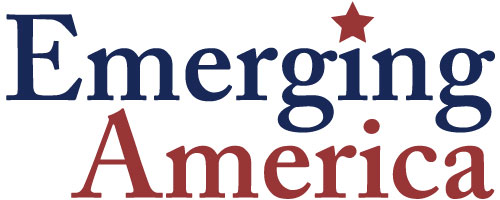Emerging America Lesson Design Toolkit
Keep at hand all seven items in the Emerging America Lesson Design Toolkit to support strong lesson plan development. You will also need copies of applicable academic standards and, of course, your text set, and any other support materials for the lesson. Refer to each tool to broaden choices for you and for students. The tools help make precise and clear the language in lesson objectives, instructions for assignments, rubrics, graphic organizers, and other handouts.
RAN Chart
A Tool to Help Correct Misconceptions
The point of the RAN Chart (RAN stands for "Read and Analyze Non-fiction") is for students to research and confirm or correct their ideas for themselves! (Thus the RAN Chart improves on the old "Know-Wonder-Learned / KWL" chart.)
Step 1: Draw the RAN Chart on a whiteboard or smart board, or arrange note cards or post-its on a RAN Chart template. Ideally, leave the RAN Chart up through throughout an investigation. Create categories to help categorize the important ideas and information of the topic.
Circle of Viewpoints Thinking Map - Visible Thinking Project - Project Zero
Prior to investigating a source, students examine the variety of people and groups that would interpret the source differently. Members of the class brainstorm to arrive at a list of all the different viewpoints, then one by one speak from the perspective of the varying stakeholders. This thinking routine, published by the Visible Thinking project at Project Zero, helps students consider the social and historical context for a primary source.
Civics and the Census–Everybody Counts
Access an excellent slide show on the Census from Library of Congress Teaching with Primary Sources Consortium member Dr. Elizabeth Osborn, Indiana University Center on Representative Government!
Restricting Immigration to the US
This lesson uses the 21st century “travel ban,” ruled constitutional in 2018, as an entry point to explore previous shifts in US immigration policy. More specifically, students will use primary sources to examine social contexts of three specific immigration laws (Chinese Exclusion Act of 1882, Immigration Acts of 1921 & 1924, and Immigration and Nationality Act of 1952) in order to understand who was banned or excluded from the US and why.
Civil Rights & Disability: 1990 ADA, IDEA, & the Juvenile Justice System Today
Kelley McDermott, History teacher in a Massachusetts Department of Youth Services facility developed this lesson to attract her 8th grade students interest in research and public policy. Historically, students with disabilities are disproportionally caught up in the juvenile justice system. The lesson employs many strategies and tools for accessibility from Emerging America's Accessing Inquiry course. These include a focus vocabulary analysis and Universal Design for Learning plan.
Recommended Social Justice Books on Disability
From Social Justice Books: A Teaching for Change Project, this powerful site offers more than 60 curated lists of literature and history books on social justice and multicultural points of view for children, young adults, and educators. Book lists are organized by topic areas–including Changemakers, Disabilities, Immigration (and specific immigrant groups), Organizing, and Voting Rights!
Conducting Searches for Primary Sources - Video Guide
Finding Primary Sources on Disability History
Browse the thorough and easy-to-follow: Using the Library of Congress Online: A Guide for Middle and High School Students. Also very useful for teachers!
Emerging America Lesson Accessibility Grid
Emerging America's lesson plan template features a Universal Design for Learning (UDL) grid borrowed from Social Studies & Exceptional Learners (see below). It is designed to support teaching of Social Studies. Three columns call for strategies that support the UDL instructional framework (see description in Accessing Inquiry clearinghouse).
